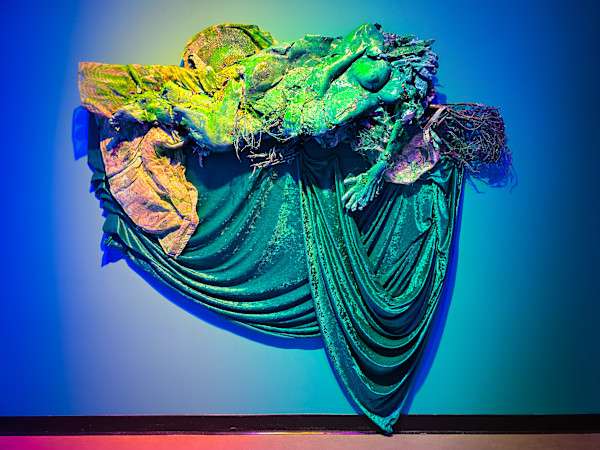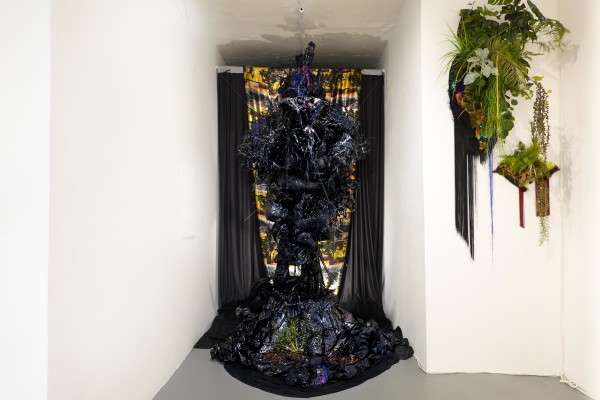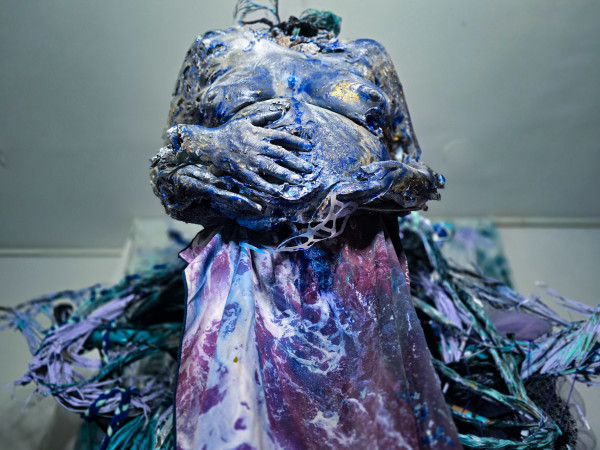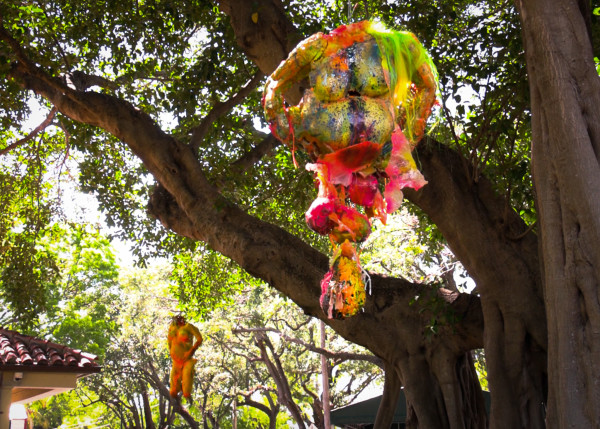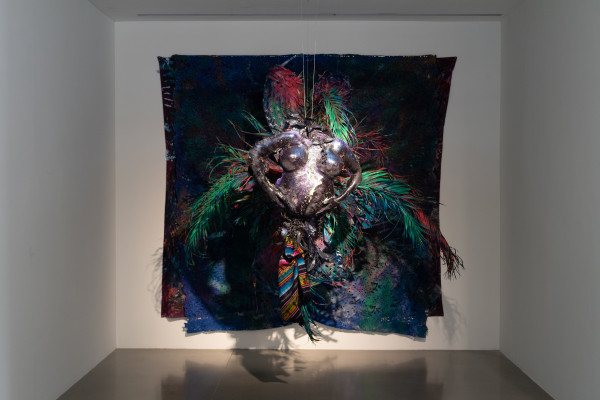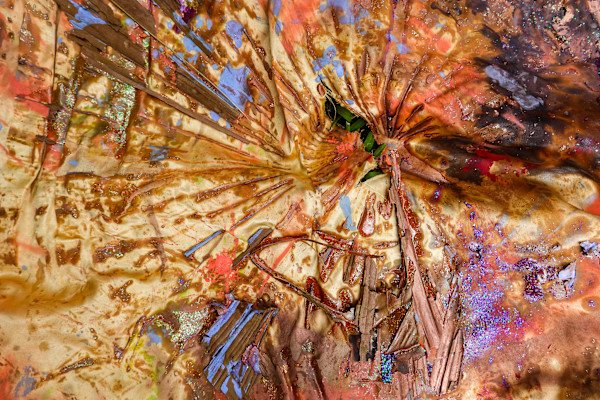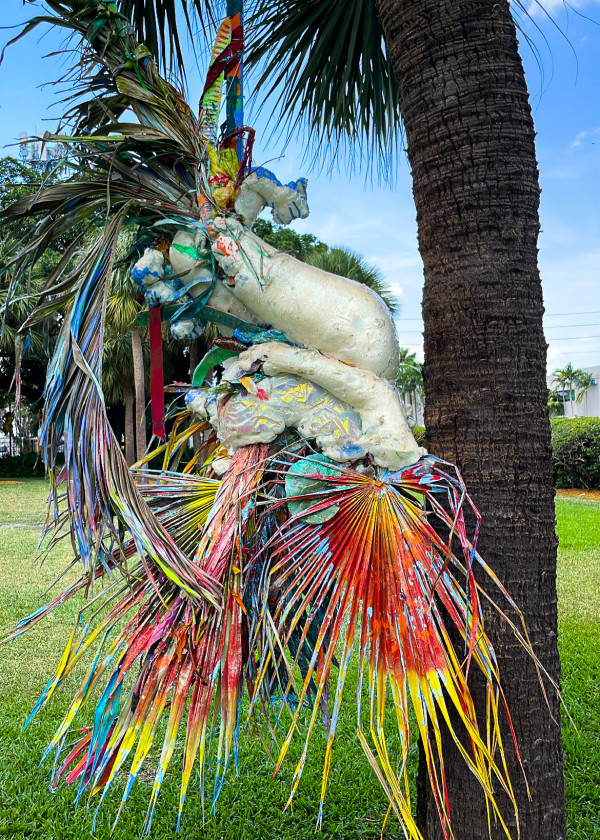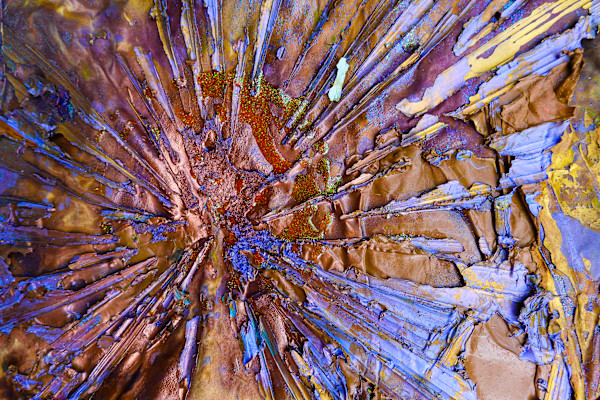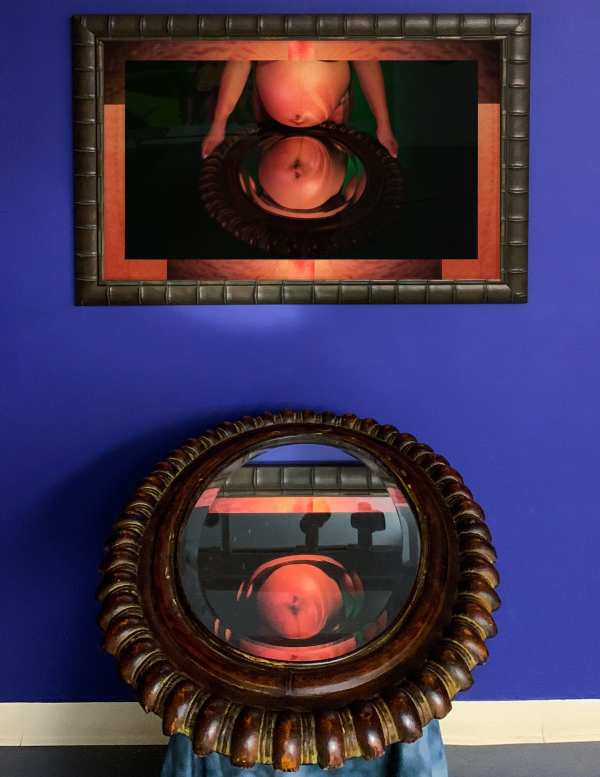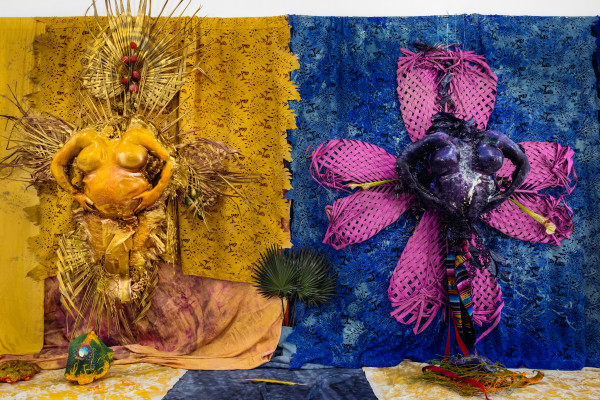A floating pregnant figure in a buoyant bed of amniotic, aquatic light conjures Yemaya in a crucifix pose before her water breaks. Reflected on the surface of a mixed race figure, is a textured topography of a dress net printed with a miniscus effect on a translucent Caribbean sea of iridescent light. The artist developed a relationship with Catherina of Liberty City over several months, then photographed Catherine 8 months pregnant in Miami Beach FL 2020 in the Mama Spa Botanica workshop. Absorbing the conflicts Latinx, mixed race, front line families endured while the crowning corona virus was crowning during the pandemic, conjured divine strength. Catherine's mixed race, mixed status family supported her critical care after labor and delivery during her Cuarentena (40 days post pardum ritual care common across Latinx communities of the Americas) to ensure her and her baby's survival in FL where the maternal & infant mortality rate is 200 x higher than the national average.
To create this architectural photograph, the artist hacked a traditional 2D printer to perform 3D printer topographical UV mapping of a pregnant figure in an aquatic landscape. A textured, sculpted surface is layered beneath archival acrylic ink to transcend historically restrictive visual media into a tactile braille architectural photograph, whose supple layers are sculpted from an otherwise slippery, flat surface. The haptic experience of the work challenges optic technologies, fabrication methods, as well as our received notions of visibility or access to critical perspectives of archival representation by centering our embodied memory through our own touching narratives.
The highest piont of the landscape topography in the image is the center of the floating figure's pregnant belly. A departure from the legacy of Rembrandt's nose (where the density of oil paint is most concentrated at the height of white light on the subject's face- was considered a technological painting revolution), the brown floating figure reinterprets readily available mass production technologies as well as the mixed race subject as sites for our critical reflection. The photograph layers contemporary painting medium (acrylics) into archival inkjet printing techniques to create a 3 dimensional surface as a hybrid painting and architectural photographic relief.
The photograph is part of the Linea Negra series 2008- present. The artist began the series after her own infertility diagnosis to contextualize her mother's birth in a car in the Everglades swamp, and how the impact of a mixed race, mixed status family ensured their own survival despite limited access to medical or institutional support in 1980s FL. The decades long documentary process including stillborn and moving images: Linea Negra series examines the inception of ranking systems violating vulnerable bodies in American mythology, while developing a critical conscience by archiving indigenous millenary traditions.
- Collections: Linea Negra photographs




